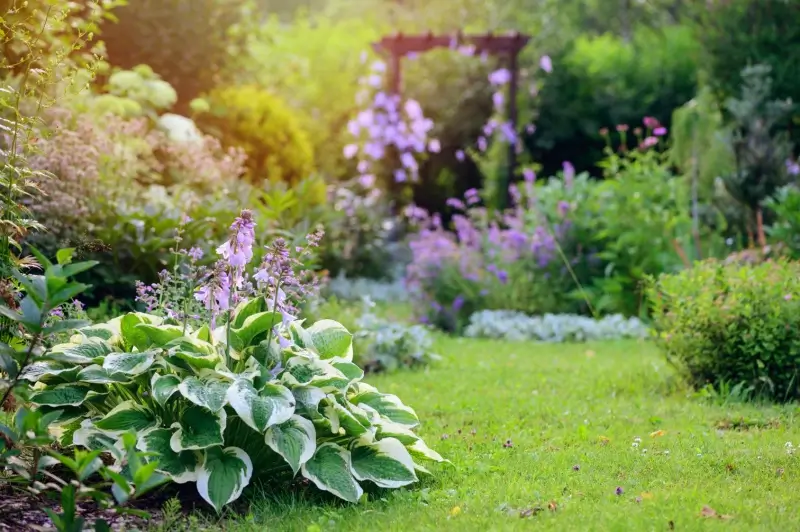
The Grounds Guys offer insights into the most fragrant bushes to enhance your garden's aroma.
|
The best gardens and landscapes are multisensory. Beyond providing visual appeal with their attractive foliage and colorful blooms, gardens can also delight the nose with rich fragrances that reduce stress and create a soothing ambiance. c
Table of Contents:
Seasonal Guide to the Most Fragrant Bushes
By carefully selecting and planting sweet-smelling bushes, you can create a dynamic landscape that engages multiple senses and offers year-round interest. Best of all, most fragrant bushes attract pollinators, like bees, butterflies, and hummingbirds, which support your garden’s ecosystem and add movement and life to your landscape.
But what shrubs and bushes should you choose? Here are a few of our favorites.
Lilac
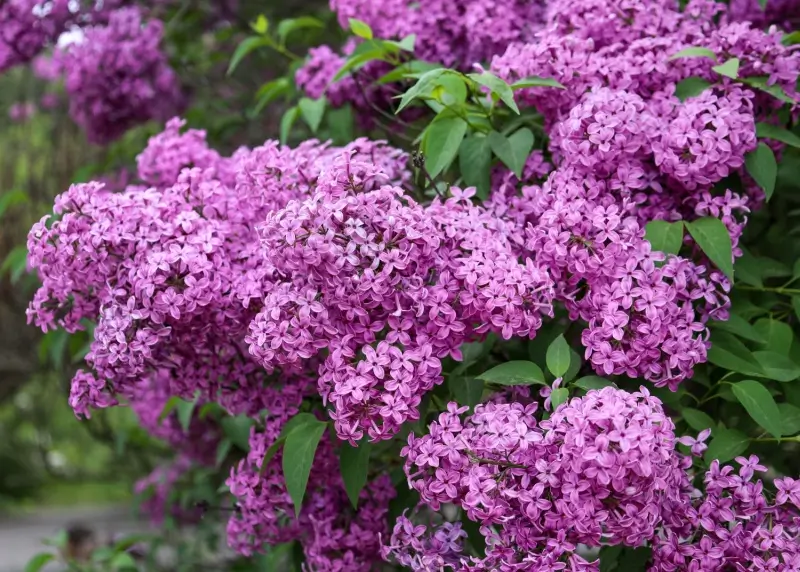
Lilac shrubs are prized for their distinctive, highly aromatic scent and are often described as floral with a subtle hint of vanilla. These hardy shrubs can grow up to 15 feet tall and wide and tolerate cold winters. They bloom in mid-spring and are most fragrant in the early morning and late evening.
Gardenia
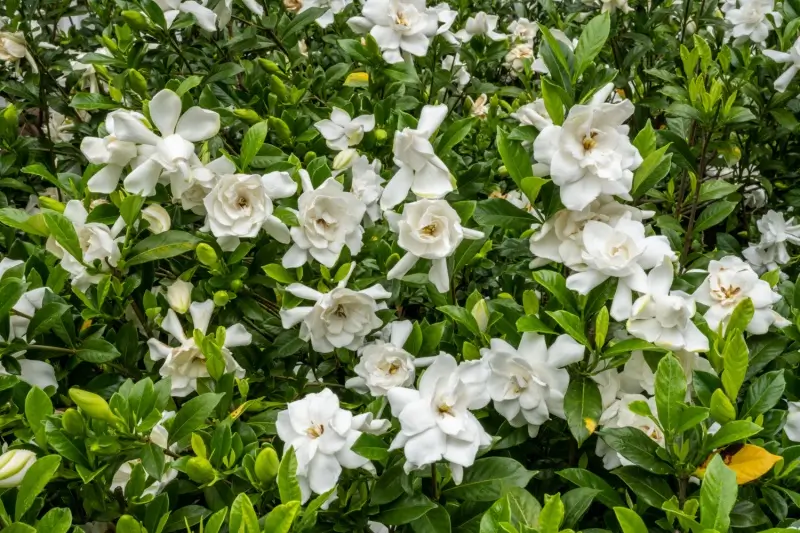
This evergreen shrub is famous for its glossy dark green leaves and strikingly beautiful white flowers. You can expect a heady and lush floral fragrance from your gardenias. Native to subtropical regions, gardenias can struggle in colder climates. This fragrant white flower bush can grow up to eight feet tall.
Daphne
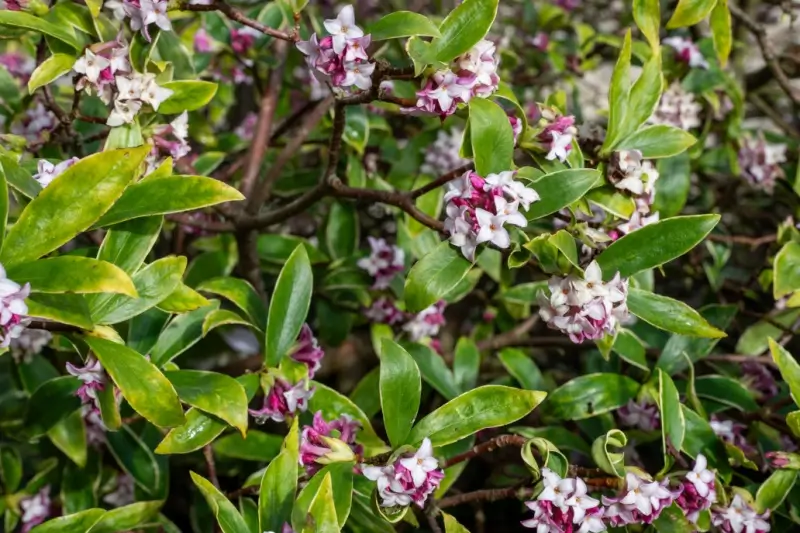
Slow-growing Daphne is typically compact and mounded, growing up to five feet tall at the most. Its glossy, leathery leaves range in color from dark green to bluish-green. Daphne blooms with highly fragrant pinkish-purple flowers in the early spring and is known for its intense, sweet fragrance.
Mock Orange
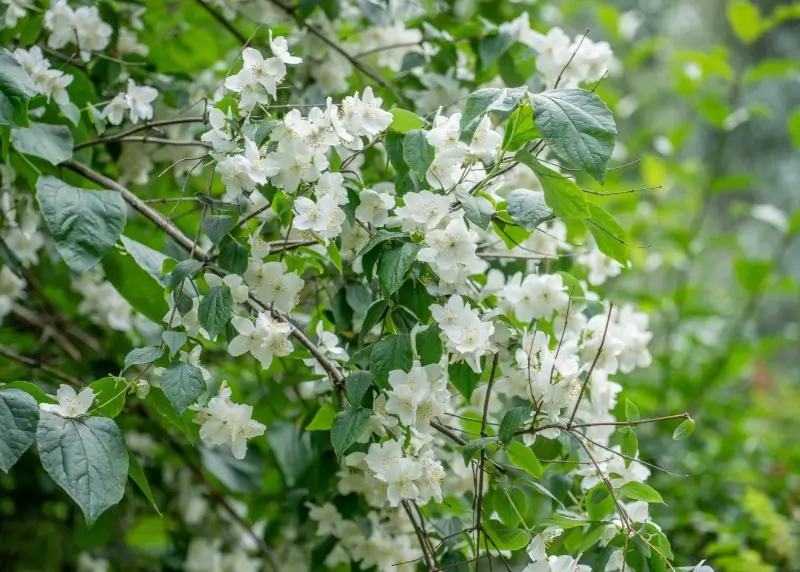
These fast-growing shrubs can reach as tall as 12 feet and are named for their citrus-like fragrance. Mock orange blooms with showy white flowers appear in late spring to early summer. Take a sniff of this fragrant white flower bush in the evening when its scent is the strongest.
Viburnum
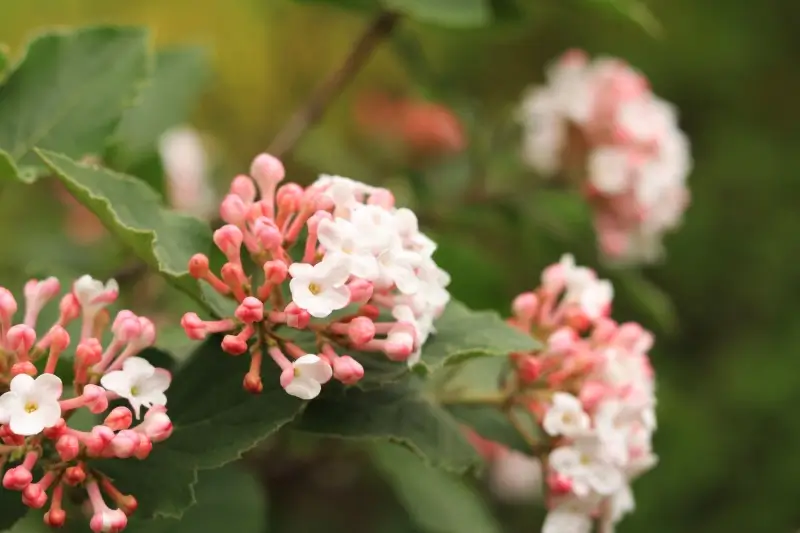
This diverse shrub comes in many different varieties, from compact, rounded forms to larger, spreading shrubs or small trees. Some deciduous varieties shift into attractive fall colors, including yellows, oranges, and burgundy. Flowers on the viburnum shrub are typically small and range in color from white to pink. The intensity and character of the fragrance will depend on the type of plant you choose, though the scent of some has been described as a blend of spice, vanilla, and cloves.
Butterfly Bush

From mid-summer to fall, butterfly bushes produce fragrant spikes clustered with small, tubular flowers ranging from white to deep magenta. Certain varieties even bloom with yellow and orange flowers. This popular shrub grows between six and 12 feet tall and spreads up to 15 feet wide. It’s prized for its honey-like fragrance, which carries well and can perfume your surrounding garden.
Flowering Quince
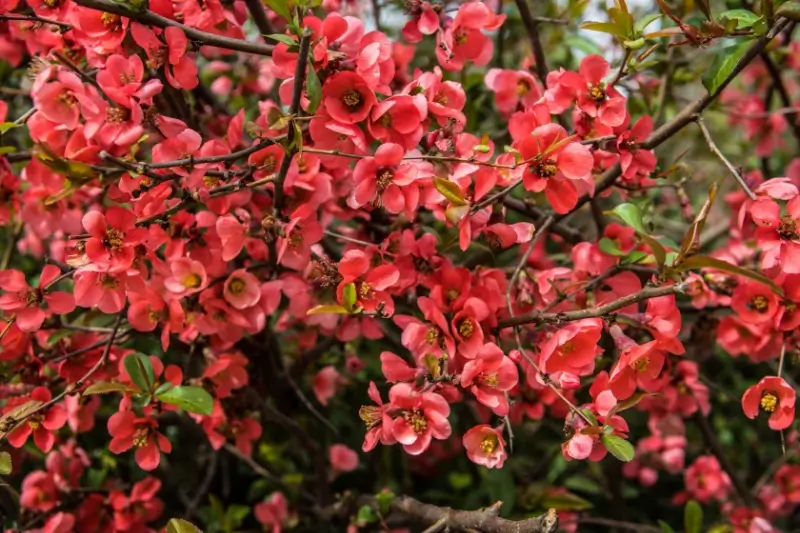
Flowering quince is among the first shrubs to bloom in early spring, often before its leaves appear. This shrub can grow up to six feet tall and is known for its light, sweet fragrance. As a bonus, the plant also produces edible fruit that you can turn into delightful jams and jellies.
Selecting Fragrant Bushes for Different Climates
Before you head to your nearest plant nursery and start tossing shrubs into your cart willy-nilly, take a moment to consider your climate and the specific growing conditions of your region. Choose plants with the best possible chance of thriving in your garden long term.
Cool, Moist Climates
If you live in the Pacific Northwest or Northeast, you’ll want to choose shrubs that love moisture and can tolerate cooler winters. Some of our favorites are:
- Lilacs
- Daphnes
- Viburnums
- Mock orange
Warm, Humid Climates
Live in the Southeast or Gulf Coast? You’ll want fragrant bushes that can stand up to lots of humidity and hot summers, including:
- Gardenias
- Certain rose varieties, such as Knockouts and Drift
- Sweet Olive
Hot, Dry Climates
Residents of the Southwest and Texas should look for hardy, drought-tolerant shrubs that can handle the heat. We suggest:
- Texas sage
- Apache plume
- Desert willow
- Butterfly bush
Temperate Climates
For Midwesterners and those who live in the Mid-Atlantic region, you’ll want all-around sturdy shrubs that can survive both hot summers and wet, cold winters, such as:
- Lilacs
- Flowering quince
- Spicebush
Essential Care Tips for Sweet-Smelling Bushes
You’ll get the best scent results from healthy, strong shrubs, so good care practices are critical to creating the fragrant oasis of your dreams.
Test Your Soil
As usual, we recommend you start by testing your soil to ensure its pH and nutrient balance can support your shrubs. You can find soil tests at most landscaping and home improvement stores. You can also amend the soil with compost or fertilizer to improve the fertility of the soil.
Dig and Plant Your Bush
With your soil ready to go, choose a spot with enough sun exposure and dig a hole wide enough to fit the root ball of your shrub with room to spare. Make the hole slightly shallower than the entire root ball. Put your shrub in the hole and pack the dirt back around it. Then, water thoroughly and apply a layer of mulch to help retain moisture.
Water and Fertilize
Water your newly planted shrubs regularly to encourage your plants to establish a deep and extensive root system. Once established, you can water your plants up to one inch a week, including rain.
To keep your most fragrant bushes healthy, apply a balanced, slow-release fertilizer in early spring. Some shrubs, like lilacs and gardenias, may need extra fertilization after flowering.
Prune and Wrap
Prune your shrubs immediately after flowering to avoid removing developing buds. Get rid of dead or diseased branches to promote new growth. After the flowers die, remove or “deadhead” them to encourage continuous blooming. Deadheading also helps you keep your shrubs looking tidy.
Finally, if you live in colder climates, you may want to wrap vulnerable shrubs in burlap or use windbreaks to shield them from harsh winds and winter sun.
Ready to Transform Your Garden with Fragrance? Plant Today!
When planning your garden and landscape, it’s easy to get caught up with the shape, size, and colors of your plants. Don’t forget to take fragrance into consideration. Sweet-smelling bushes can add another layer of delight to your landscape, giving you a beautiful scent to carry your worries away.
Not sure which fragrant bushes to plant in your garden? You don’t have to figure it out alone. At The Grounds Guys®, our local teams include experienced and knowledgeable horticulturists who can help you plan every step of your garden. We can make recommendations, develop designs, plant your garden, and then take over ongoing maintenance.
We want you to delight in your outdoor landscape, which is why we give all our customers our Neighborly Done Right Promise®. If you want the best-smelling landscape in the neighborhood, request a free estimate for our services today.